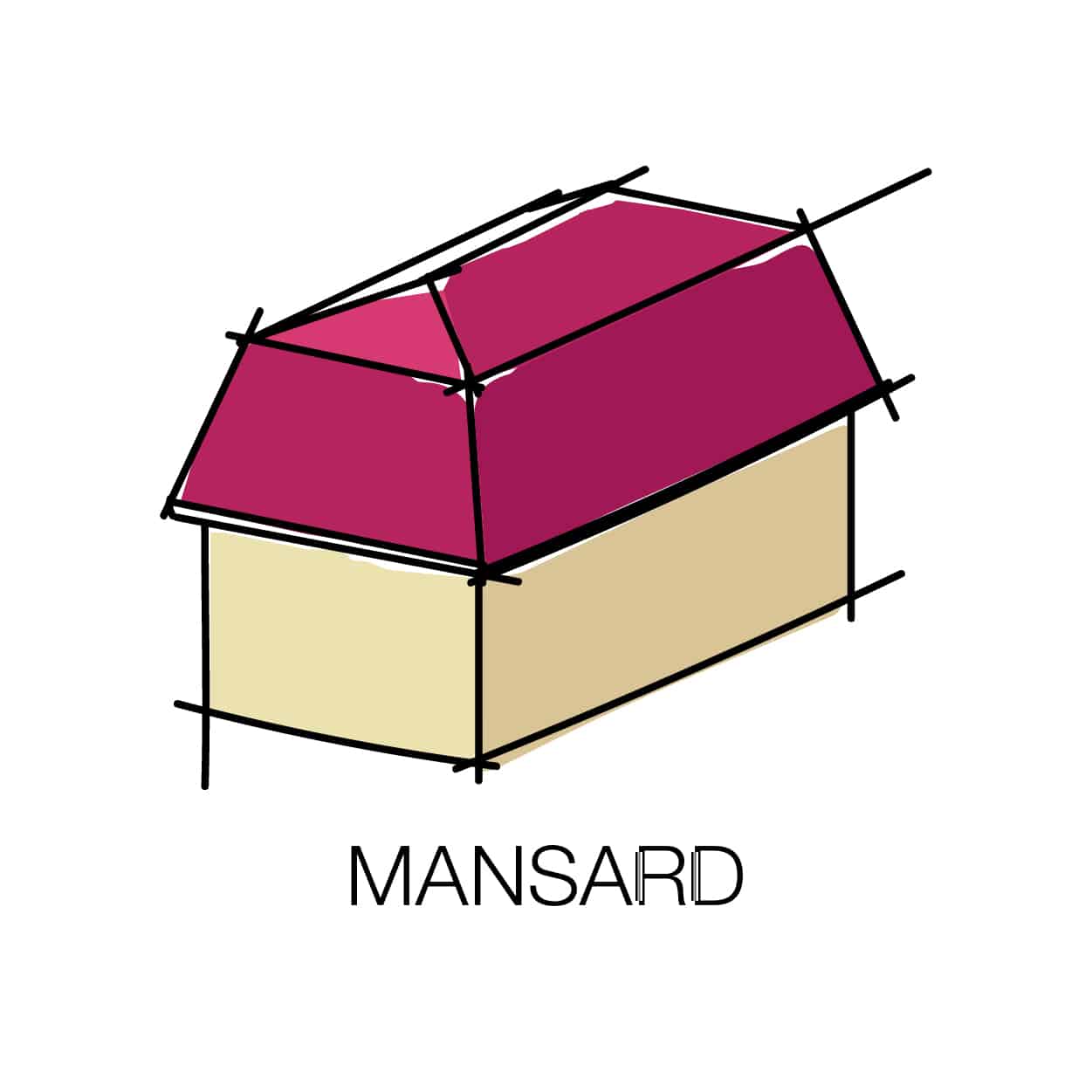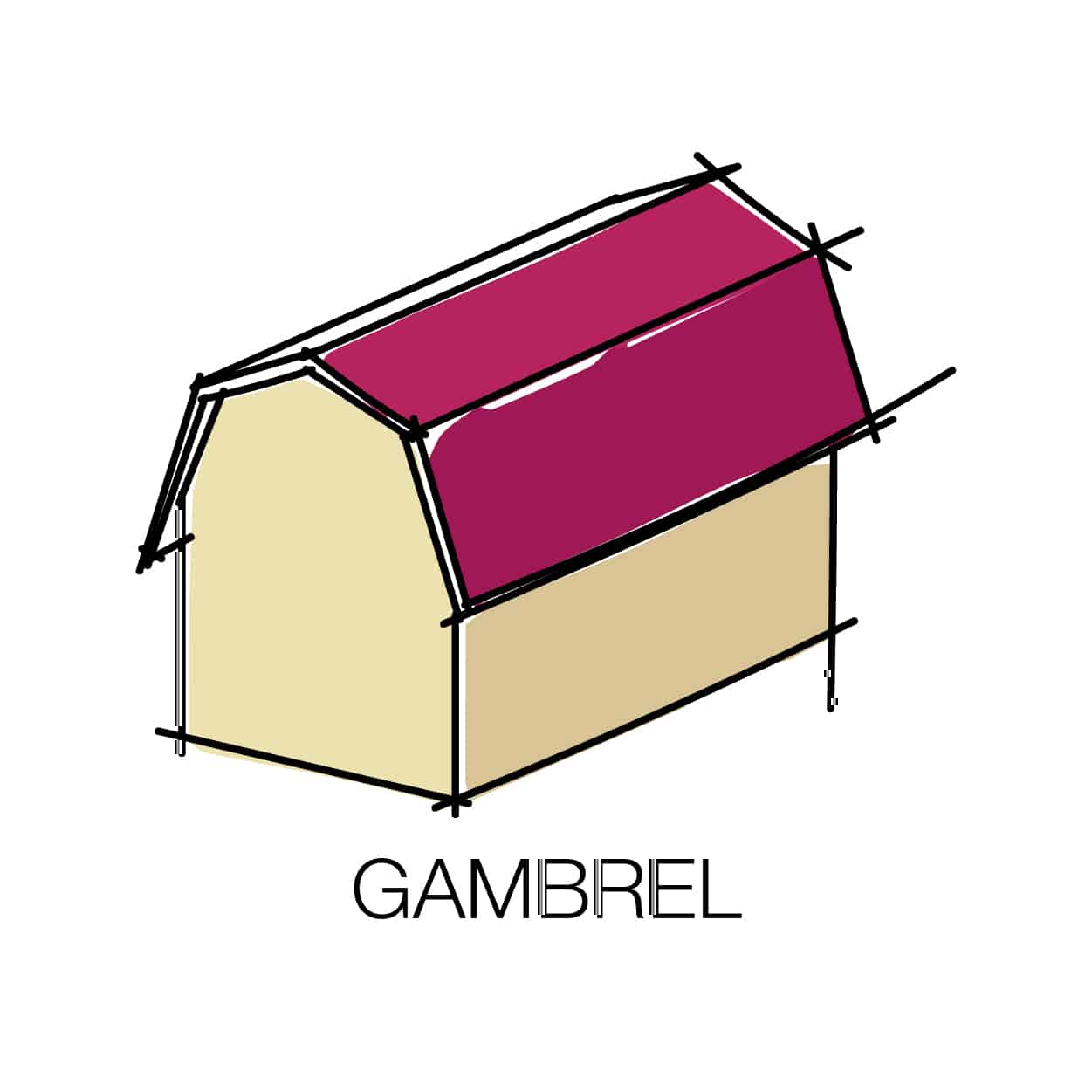The Mansard Roof has been in existence since the 16th century. However, it was not until the early 17th century that this roofing style gained popularity. Ever since then, the Mansard roof has become an integral part of French architecture and is quite commonly seen in many buildings located in that part of the world.
What exactly is the Mansard roof? What are the advantages and disadvantages of using this roofing style? How did it come into existence? We will answer all these questions and more in this article. So stay tuned to find out everything you need to know about the Mansard roof.

What Is The Mansard Roof?
Simply put, the Mansard roof, also known as the French roof or Curb roof, is a hybrid between a gambrel roof and a hip roof. If you are not familiar with a gambrel roof, then let us first explain its architecture in brief.
You can consider Gambrel roofs to be a modified version of a Gable roof. How, you ask? Well, unlike a standard Gable roof, which features a single slope on each side, a Gambrel roof has two slopes on each side. The top slope is a lot flatter in comparison to the bottom one, which almost seems vertical.
Although this roofing style is not commonly used in traditional homes, you will find it in many barn houses. If you are still having trouble visualizing this roofing style, we suggest you take a look at the illustration and image below.


A Barn House Featuring A Gambrel Roof
via Byler Barns and Backyards
Now that you have a clear idea about what a Gambrel roof is like, let us explore the Mansard roof in detail. Just like the gambrel roof, the Mansard roof features a similar slope design on two opposite sides. However, on the other pair of sides, the Mansard roof features the same sloping style. In the case of the gambrel roof, there are no slopes on its remaining faces.
Hence, our opening statement – ” Simply put, the mansard roof, also known as the French roof or curb roof, is a hybrid between a gambrel roof and a hip roof.” makes sense, doesn’t it?
Other than the additional slopes, Mansard roofs also have a unique design element that further distinguishes them from traditional gambrel roofs. If you look at the illustration below, you will notice a line of dormer windows along the steeply-raked bottom slope. These windows are an integral part of the gambrel roof architecture.

An Aerial View Of Mansard Rooftops Along Boulevard Haussmann In Paris
via Wikipedia
What Are The Advantages Of Using A Mansard Roof?
-
Extra Attic Space
Compared to a standard Gable roof or Hip roof, Mansard roofs offer significantly more attic space due to the almost vertical bottom slope. The loft area of a Mansard roof does not need to compromise on space and can easily house a master bedroom if needed.
Moreover, the use of dormer windows along the entire length of the bottom slope allows more natural light inside the building, and that further increases the sense of space.
-
Easier Expandability
The design of a Mansard roof, characterized by its nearly vertical lower slope, lends itself well to expansions and modifications. This feature allows for a more feasible addition of floors as compared to other common roofing styles like Gable or Hip roofs. The Mansard roof’s structure also creates an increased interior space suitable for future conversion into functional rooms.
A crucial factor to consider for such conversions, particularly in urban or high-noise areas, is sound insulation. Implementing effective noise reduction strategies can significantly improve the comfort and utility of the transformed space. Thus, the Mansard roof not only provides physical expandability but also flexibility to adapt to evolving living or working needs over time.
-
Aesthetical Value
Although looks are subjective, there is no denying the fact that Mansard roofs have an elegant design, largely due to the fact that they were an important part of French architecture during the Renaissance period. Moreover, in areas where they are not commonly found, this roofing style will definitely look more sophisticated and might even be a head-turner, if executed properly.
What Are The Disadvantages Of Using A Mansard Roof?
-
Weather Resistance
To be honest, Mansard roofs are not the most functional. In fact, they carry quite a few glaring disadvantages which make them completely unsuitable in areas with extreme weather conditions. Why, you ask? Well, it is entirely due to the low pitch of the topmost part of this roof.
The almost flat slope means that it will not cope well with heavy rainfall and can result in leakages in the roof. Moreover, in areas of heavy snowfall, the result would be far more disastrous. In fact, the entire roof might collapse under the weight of the snow.
-
High Installation Costs
After you check out a few illustrations of the Mansard roof, the first thing that will be apparent is the complexity of the design. Naturally, that will lead to a high installation cost. In fact, you will be able to install multiple Gable roofs or Hip roofs for the cost of a single Mansard roof.
Moreover, not many roofing experts will be familiar with this design. Hence, the quality of the Mansard roof might not be up to preferable standards.
-
Maintenance and Repair Costs
A high installation cost would usually point to increased maintenance and repair costs, and that could not be more true in the case of Mansard roofs. In the modern era, not many roofing experts are familiar with the Mansard roof, hence repairing them will not only be a costly affair but finding the right roofing expert will also be a great hassle.
On top of that, the use of dormer windows along the steeply raked bottom slope will push the maintenance and repair costs to new highs. Moreover, there will be a lot of debris collecting on the flatter portion of the roof, which will further increase the maintenance bill.
A History Lesson On Mansard Roofs
Although the creation of the Mansard roof is accredited to François Mansart (1598 – 1666), he was not the first to implement this roof architecture. That honor would have to go to Pierre Lescot (1510 – 1578) who used this roofing style on a part of the Louvre Museum in the year 1550.
However, it was not until the early 17th century that the Mansard roof architecture became popular. François Mansart, who was an accomplished architect of the French Baroque period, started adopting this roof style into the buildings he designed for his clients. Thus, this roof architecture was christened as the Mansard roof in his honor.
Interestingly, in Europe, Mansard can also refer to the attic space and not just the roof structure.
The popularity of the Mansard roof kept on growing in France and became even more fashionable during the reign of Napoleon the 3rd (1852–1870). During this time, the Mansard roof style spread across the world and was adopted in buildings in the United States, Canada, and many other western countries.
Although the Mansard roof was not used quite as often in traditional homes, it featured in many high-rise residential buildings, especially in the late 1960s and 1970s. Later on, many small commercial buildings also adopted a Mansard-style roof. However, unlike a traditional Mansard roof, these roofs had a flat top.

A Mansard Roof Building Located In Fifth Avenue And 19th Street
via Ephemeral New York
Conclusion
Before we bid adieu, let us end this article with a word of advice. Although Mansard Roofs may look sophisticated, and in many cases ostentatious, they are not very practical, especially if you are considering installing it in your home.
They are a piece of architectural heritage, and while that may be a tempting reason to use this roof in your home, we would advise you to choose the roof type very carefully with your region`s climate in mind.
Related Articles


